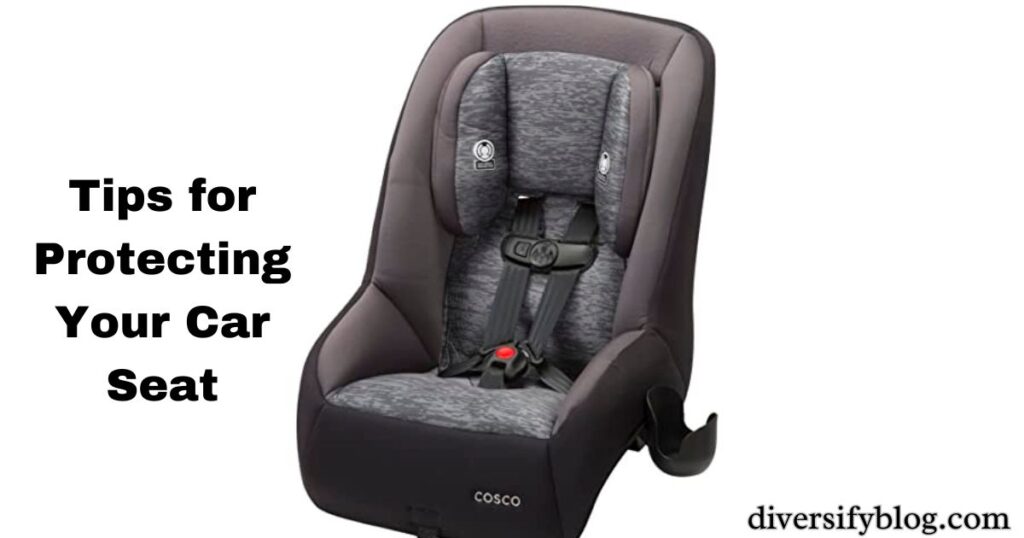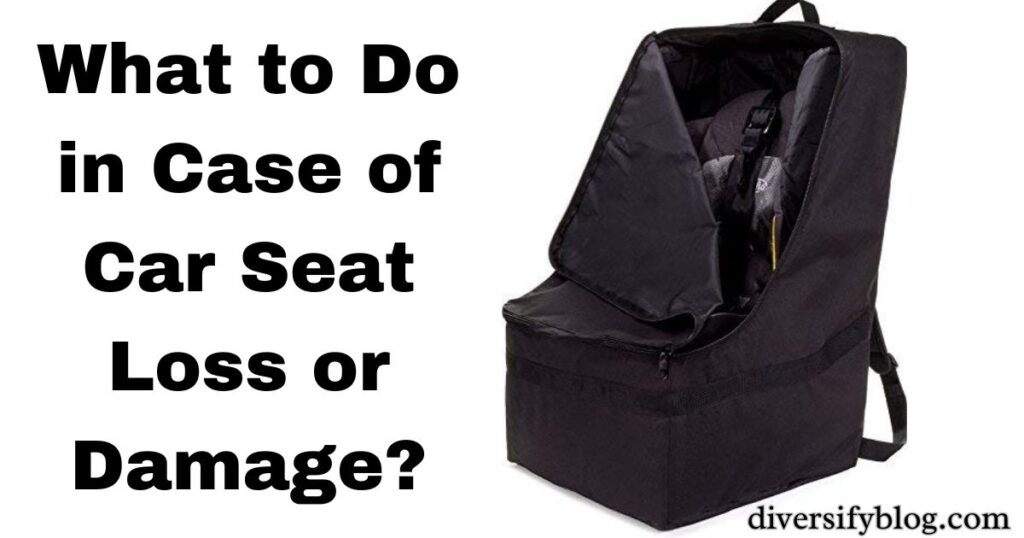Introduction:
When going on a trip with a child, every parent wants to make sure they are safe and comfortable. The baby car seat is an important thing for families to bring on trips. But the question is ”How To Carry Car Seat In Airport” it gets there safely, especially when flying? This detailed guide goes into great detail about How To Carry Car Seat In Airport, including how to protect, and follow the rules set by the airline. Whether you’re wondering How To Carry Car Seat In Airport or seeking tips to safeguard it from damage, we’ve got you covered. Let’s embark on this trip together, ensuring your little one’s safety is prioritized every step of the way.
Table of Contents
Checking How To Carry Car Seat In Airport:
You frequently need to pack their car seat when you travel with a baby or small child. Fortunately, most US airlines let you check a car seat for free. This implies that you won’t be charged more to travel with your child’s car seat installed.
Car seats do not count against your checked luggage allowance since, like strollers, they are considered necessary baby equipment. You may now travel with everything your child needs, easier and at a lower cost.
It’s a good idea to examine the specific restrictions of the airline you’re flying with if it’s not located in the US. Globally, the majority of airlines allow you to check a car seat for
Tips for Protecting Your Car Seat
Protecting your car seat during travel is crucial to ensure it remains safe and functional for your child. Here are some valuable tips to safeguard your car seat:

- Use Bubble Wrap or Padding: Wrap your car seat in bubble wrap or use other padding materials, especially around vulnerable areas prone to damage. This extra layer of protection can prevent scratches and dents during handling.
- Secure Loose Parts: Before packing your car seat, ensure all straps and adjustable parts are tightly secured. Loose parts can get caught or damaged during transit, so take the time to double-check everything before departure.
- Consider Waterproofing: If you’re traveling to a destination with unpredictable weather, consider using a waterproof cover or bag for your car seat. This will help keep it dry and clean, even in inclement conditions.
- Label Your Car Seat: Label your car seat with your name, contact information, and destination. In the event it gets misplaced, clear labeling can help airline staff reunite you with your belongings quickly.
- Photograph Your Car Seat: Before packing your car seat, take photos of it from various angles. These photos can serve as documentation in case of damage or loss, making it easier to file insurance claims or compensation requests.
What to Do in Case of Car Seat Loss or Damage?
Despite your best efforts to pack your car seat securely, there may be instances where it gets lost or damaged during travel. Here’s what you should do if you encounter such a situation:

- Report Immediately: If upon arrival you discover that your car seat is damaged or missing, promptly report it to the airline’s baggage service office, typically located in the baggage claim area. The sooner you report the issue, the quicker it can be addressed.
- Keep Documentation: Retain all relevant travel documents, including boarding passes and baggage claim tickets. These documents will be essential when filing a claim for lost or damaged items.
- Understand Airline Policies: Familiarize yourself with the airline’s policies and procedures for handling lost or damaged baggage. Each airline may have its own specific process, so inquire about what steps you need to take and what compensation you may be entitled to receive.
- File a Claim: Follow the airline’s instructions for filing a claim for your lost or damaged car seat. Provide detailed information about the incident, including any supporting documentation or photographs of the damage. Be thorough in documenting the extent of the damage to support your claim.
- Consider a Temporary Replacement: If your car seat is lost and you need an immediate replacement, inquire with the airline about temporary solutions they may offer. Some airlines may provide temporary car seats or offer alternative arrangements until your situation is resolved.
Being prepared for the possibility of car seat loss or damage can help mitigate stress and expedite the resolution process. By following these steps and communicating effectively with the airline, you can work towards a satisfactory outcome in the event of an incident involving your car seat.
Should You Check Your Car Seat or Use it In-Flight?
When preparing for air travel with your child, one of the decisions you’ll need to make is whether to check your car seat or bring it onboard for use during the flight. Let’s explore the considerations for each option to help you make an informed choice:
Checking Your Car Seat:
Checking your car seat involves packing it securely and entrusting it to the airline’s baggage handling system. Here are some factors to consider:
- Safety and Security: While your car seat will be stowed in the aircraft’s cargo hold during the flight, it will still be subject to handling by airport personnel. Properly packing your car seat and ensuring it is labeled with your contact information can help minimize the risk of damage or loss.
- Cost and Convenience: Most airlines allow car seats to be checked free of charge, but it’s essential to confirm this with your specific airline. Checking your car seat can free up space in the cabin and make the boarding process smoother, particularly if you’re traveling with other bulky items or children.
- Space and Comfort: Checking your car seat means your child won’t have access to it during the flight. If your child prefers the familiarity and comfort of their own car seat, bringing it onboard may be a better option.
Using Your Car Seat In-Flight:
Bringing your car seat onboard the aircraft allows your child to use it as a familiar and secure seating option during the flight. Consider the following:
- Extra Seat or Lap Child: If you choose to use your car seat onboard, you’ll need to book a separate seat for your child. Alternatively, if your child is under two years old, they may be eligible to travel as a lap child, sitting on your lap for the duration of the flight.
- Safety and Comfort: Using your car seat onboard provides an added layer of safety and security for your child, especially during takeoff, landing, and any turbulence. It also offers a familiar and comfortable seating option, which can help your child feel more at ease during the flight.
- FAA-Approved Seats: Ensure that your car seat is FAA-approved for use onboard aircraft. Look for the FAA approval label on the seat, indicating that it meets federal safety standards for air travel.

What to Do in Case of Car Seat Loss or Damage
If, despite your best efforts, your car seat is lost or damaged during travel, here are the steps you should take:
1. Report Immediately:
As soon as you notice that your car seat is missing or damaged upon arrival, report the issue to the airline immediately. Most airlines have a dedicated baggage service office in the baggage claim area where you can report such incidents. Prompt reporting increases the chances of resolving the issue swiftly.
2. Keep Documentation:
Retain all relevant travel documents, including boarding passes, baggage claim tickets, and any other documentation provided by the airline. These documents serve as evidence of your travel and may be necessary for filing a claim with the airline or for insurance purposes.
3. File a Claim:
Follow the airline’s procedure for filing a claim for the lost or damaged car seat. Provide detailed information about the incident, including the date, time, and location of the damage or loss. If possible, include photographs of the damage to strengthen your claim. Be prepared to provide your contact information and details about your travel itinerary.
4. Temporary Replacement:
In some cases, the airline may offer a temporary replacement car seat while your claim is being processed. If your car seat is lost and you need an immediate solution, inquire with the airline about the possibility of obtaining a temporary replacement. This can provide peace of mind and ensure that your child has a safe and comfortable seat for the duration of your travel.
By following these steps and remaining proactive in addressing any issues, you can navigate the process of dealing with a lost or damaged car seat effectively and ensure a smoother resolution. Remember to stay calm and courteous when communicating with airline staff, as they are there to assist you in resolving the situation.
People Also Ask / Questions and Answers
Can you take a car seat in checked baggage?
Yes, you can take a car seat in checked baggage when traveling by air. Most airlines allow passengers to check car seats for free, and they are not counted as part of your checked baggage allowance.
How to pack baby car seat for checked baggage?
To pack a baby car seat for checked baggage, ensure it is clean and, if possible, disassembled to make it more manageable. Use the original packaging or invest in a padded car seat travel bag for added protection. Secure all straps and movable parts, and label the car seat with your name, contact information, and destination for easy identification.
How do you package a car seat for check in?
Packaging a car seat for check-in involves wrapping it in bubble wrap or padding, placing it inside a sturdy car seat travel bag or original packaging, and securing all straps and movable parts. Label the car seat with your name, contact information, and destination using a luggage tag or permanent marker.
Do car seats get damaged when checked?
While there is a risk of car seats getting damaged when checked, taking proper precautions can minimize this risk. Using padded travel bags or original packaging, securing loose parts, and labeling the car seat can all contribute to protecting it during transit. Additionally, being aware of airline policies and handling procedures can ensure that the car seat is treated with care throughout the check-in and baggage handling process.
Can You Put a Car Seat in a Checked Bag?
Yes, you can put a car seat in a checked bag. Airlines typically allow car seats to be checked either as luggage or gate-checked at no additional cost. When checking a car seat, it’s essential to ensure it’s well-protected to avoid damage during transit. Some parents use a padded car seat travel bag or a large suitcase to provide extra protection.
How to Fly with a Car Seat Checked?
To fly with a car seat checked, you should first ensure that your airline allows it as checked luggage without extra fees. Place the car seat in a protective travel bag or wrap it in bubble wrap for cushioning. At the airport, either check it at the ticket counter or at the gate. When you arrive at your destination, retrieve it at the baggage claim area.
How to Package a Car Seat for a Flight?
Packaging a car seat for a flight involves securing it to prevent damage. Use a padded car seat travel bag designed specifically for air travel. If you don’t have a dedicated bag, wrap the car seat in bubble wrap or blankets for added protection, and place it in a sturdy box or suitcase. Ensure the car seat is tightly secured so it doesn’t shift during transit.
How to Carry a Car Seat with a Suitcase?
Carrying a car seat with a suitcase can be made easier with a car seat travel bag that has wheels or backpack straps. Alternatively, you can attach the car seat to your suitcase using luggage straps or a bungee cord. Some parents prefer to use a car seat stroller or cart that allows them to roll the car seat along with their luggage, making it easier to maneuver through the airport.
Conclusion:
Knowing ”how to pack a car seat for checked baggage” is essential for traveling parents seeking to ensure their child’s safety and comfort. By understanding airline policies, choosing the right car seat, and employing proper packing techniques, parents can navigate air travel with greater ease and confidence. Additionally, being prepared for unforeseen circumstances, such as loss or damage to the car seat, allows parents to respond effectively and minimize disruptions to their travel plans. With careful planning and attention to detail, parents can enjoy smoother and more enjoyable journeys with their little ones, knowing that their car seat is packed securely and ready for the adventure ahead.
In the event of car seat loss or damage, prompt reporting to the airline, documentation retention, and thorough filing of claims are crucial steps in seeking resolution. By following these steps and exploring options for temporary replacements, parents can mitigate the impact of such incidents and ensure their child’s safety during travel. Despite the challenges that may arise, staying informed and proactive empowers parents to navigate air travel with confidence, knowing that they are prepared to address any unexpected situations that may arise along the way.



















